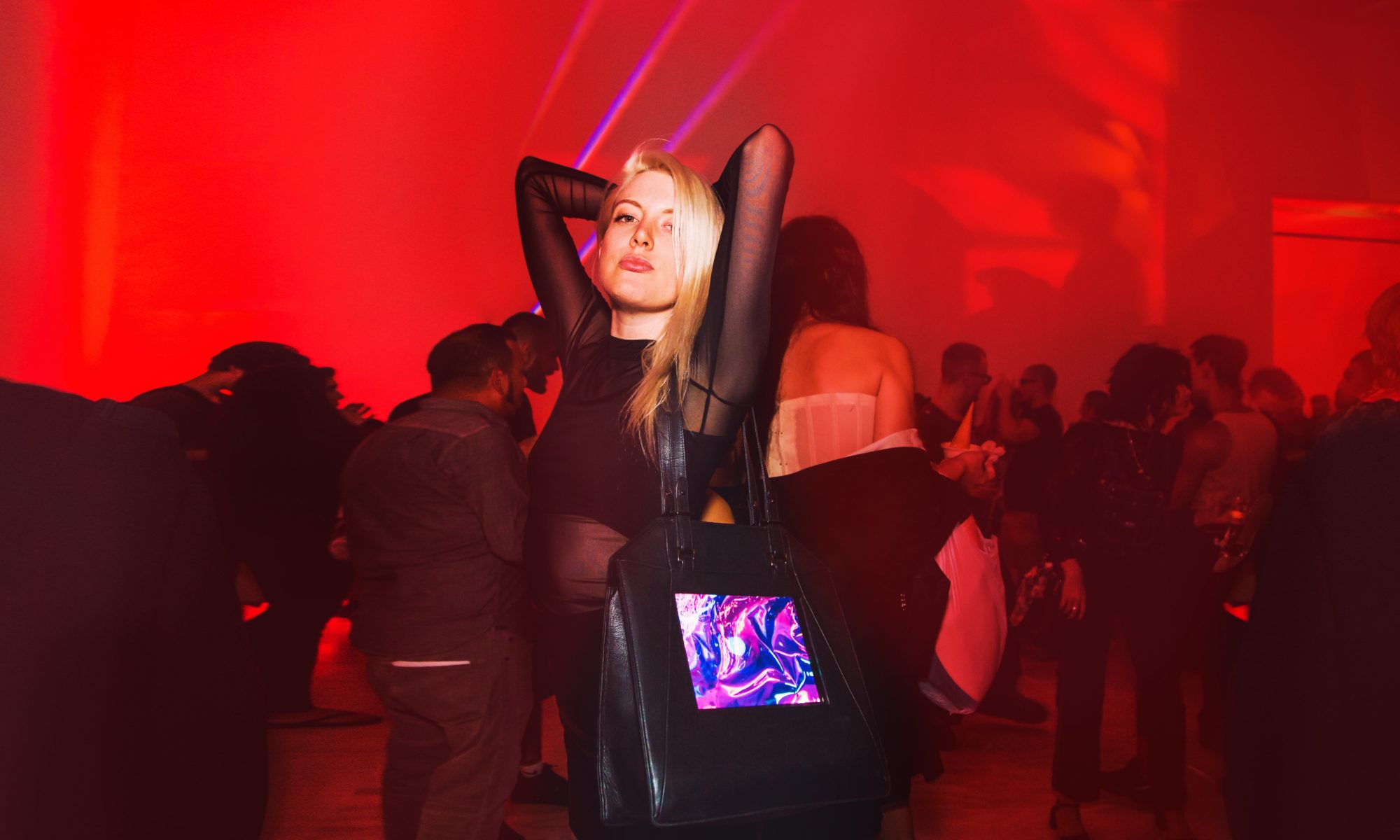Signe Pierce has been interviewed by Samantha Saiyavongsa for Playboy about how the people who need to see art the most are the people who aren’t in the art world.
‘Reality Artist’ Signe Pierce Exposes a Neon-soaked Dystopia
By reflecting society back to itself and exposing both the beautiful and ugly in ordinary scenes, this photographer is redefining beauty and justice on her own terms.
It’s not easy to categorize Signe Pierce’s work: Think Kardashians mixed with performance art, soaked in neon. Pierce, a former Saturday Night Live intern who cites a visit to psychedelic designer Lisa Frank’s house in Pierce’s native Tucson as an early inspiration, describes herself as a “reality artist.” Her photography and videos capture a hypersaturated milieu, like looking into a not-too-far-off dystopian future through rose-colored lenses on a selfie stick.
It’s no surprise rapper Big Sean tapped Pierce earlier this year to design the lighting for his “Halfway Off the Balcony” music video. The product is a sumptuous palette of bright hues against banal settings: A suburban house suddenly becomes ethereal, as does a telephone booth and even wet pavement. She calls this “aesthetic direction,” or using her keenly attuned eye to illuminate beauty where you least expect it.
Pierce isn’t afraid to turn the camera on herself. American Reflexxx, a surreal short film that premiered at Art Basel Miami in 2013, follows Pierce as she walks down a Myrtle Beach, South Carolina street. The 14-minute video shows her being taunted and eventually attacked for wearing suggestive clothing and covering her face with a reflective mask that, ultimately, serves as a mirror of reality turned ugly.
“People are always so polarized when they’re confronted by new ideas or anything they don’t immediately recognize,” says Pierce, who had an engineer design a selfie stick that she could wear on her face while posing in the middle of Times Square. The resulting performance video, Reality Is a Porno & Life Is But a Meme, is another cautionary tale.
Much of Pierce’s work sets out to dismantle society’s preconceived fears and challenge what beauty looks like. “I’m not afraid to be an artist who embraces new media and uses social media as a platform,” she says. “The people who need to see art the most are the people who aren’t in the art world.”
How do you define beauty?
The concept of beauty is often superficial, but there’s something very motivating about the sublime qualities of beauty. There’s an aura around beauty, and there’s something about being in the presence of beauty. As an artist I’m always flooded with the phenomena—being in the presence of beauty is existential. People take every day beauty for granted. We have so much to do in order to survive, who has time to stop and smell the roses?
So how do you incorporate beauty in your work as a multimedia artist, or as you call yourself, a “reality artist”?
My duty as an artist is to capture the beauty that I see and make it accessible for others, especially beauty found in every day settings—like a rose bush in a strip mall parking lot. When I capture it in my art or on Instagram, I get a lot of messages that say stuff like, “You’ve opened my eyes up to some things I’ve taken for granted.” Society conditions us to keep our head down and not get too distracted. Life is so hard for so many people, especially for people who have been dealt a hard set of cards. Visual art can be a bit of a drug when your brain feels that rush of endorphins. Sometimes beauty can give you portal into a different perspective, and that is very powerful.
What do you hope to communicate through your work?
I want it to be accessible and digestible to the average person. Art is one of the most beautiful forms of expression in the entire world and I don’t want to be limited. Feminism is always laden in my work. We’re in a weird time: I’m torn between heartbreak, but I feel empowered by the force of art and how it might be able to open up discourse about politics or identity or other aspects of human rights in America right now, like issues dealing with women and the perception of women. We all feel a bit of a fire has been lit within us to push ourselves harder. We’re so polarized right now. We’re so divided, but I want to find ways to bridge the gap. I want to create work that’s accessible, pretty and seductive—I have a greater sense of purpose than I’ve had before. An artist has no greater responsibility than to be an agent of change during times of political unrest.
From American Reflexx to your latest work with Big Sean—your work spans multiple disciplines, from photography to performance art. So what’s next on the horizon for you?
I’m doing a show in New York dealing with surveillance and basically what it’s like living as a person in a society where everybody is born with an umbilical chord to a cellphone. I’ll always have my artist practice but I do consulting for other brands. It’s so refreshing that I can be a gallery artist and doing art shows but I can lend my eyes for more commercial jobs. I’m doing “aesthetic direction”—the creative direction—for a nightclub that’s opening in New York later this year. It’s been in the pipeline for the past year. I want to spread my ideology through visual art and physical spaces. I really love doing art direction for real spaces and doing installations that aren’t just framed pictures on a wall. I enjoy turning physical spaces into new environments, specifically through lighting and colors so people can come and enjoy and feel like they’re inside my photography.


